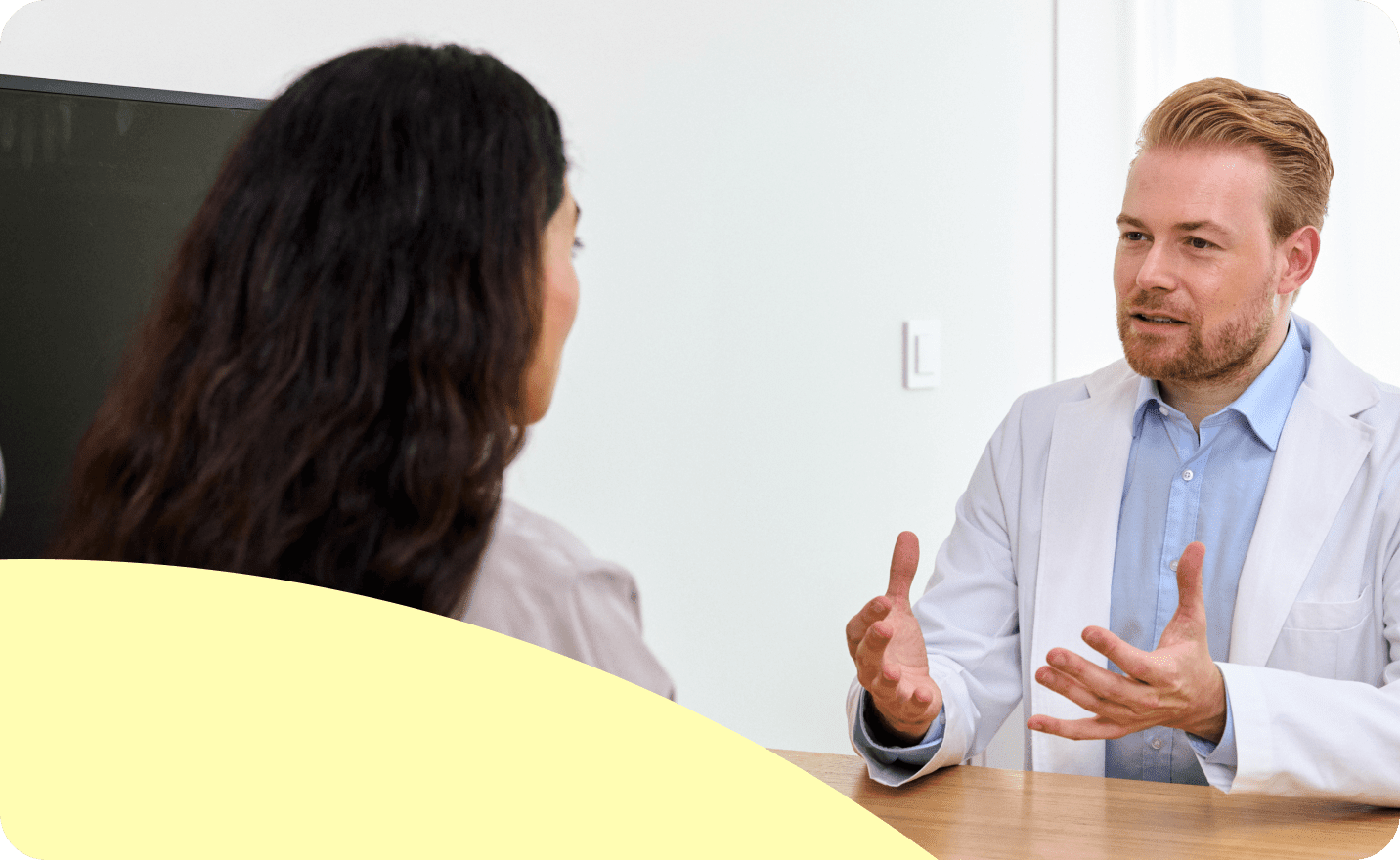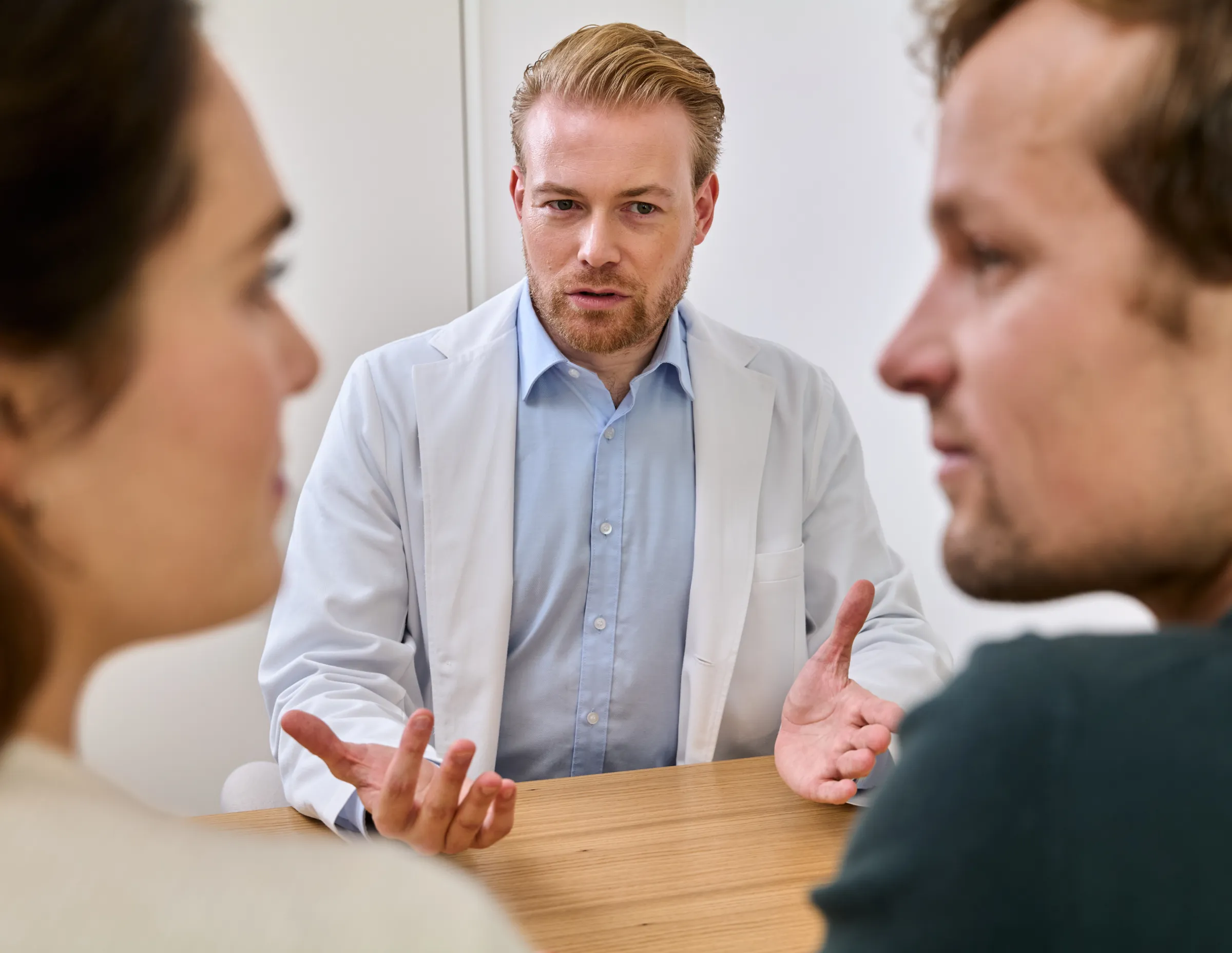How does the female menstrual cycle work, and what are its four phases? How long is a normal cycle? And when exactly is a woman fertile?
How does the female menstrual cycle work? How long is a normal cycle? And when exactly is a woman fertile?
The female menstrual cycle is an important biological process that accompanies the female body for about a third of its lifespan. It is a regular, cyclical process that begins with the onset of puberty and ends with menopause. Many hormonal changes happen over the course of a month, some of which can negatively impact a woman's general well-being. By being aware of these different phases of a cycle, a woman can anticipate the changes and minimise the potential impact on everyday life.
Phases of the menstrual cycle
A woman's cycle is typically considered to be 28 days. However, this number is only a guideline. In fact, typical cycle length varies between 21–35 days for all menstruating women. Outside of this range, a women may be experiencing oligomenorrhea (with cycles longer than 35 days) or polymenorrhea (with cycles shorter than 21 days).
It is also not uncommon to have a cycle that varies in length from month to month. For example, it is possible for a cycle to last 28 days in one month and 32 days in the next.
The menstrual cycle is controlled by various hormones and has several phases. It begins on the first day of menstruation and ends on the day before the next period. The cycle may be described differently, depending on whether one speaks of the hormones in the ovaries or those of the uterine lining (called the endometrium). In other words, the menstrual cycle is a combination of the ovarian cycle and uterine cycle.
Below, we break down the ovarian cycle and the uterine cycle of someone with a menstrual cycle of 28 days:
The ovarian cycle
Menstrual phase (Day 1–5): The menstrual phase takes place between the first and fifth day of the cycle.
Follicular phase (Day 1–13). The follicular phase begins on the first day of menstruation. In this respect, there is an overlap with the menstrual phase. During this time, the amount of follicle-stimulating hormone (FSH) released increases and stimulates the development of follicles in the ovaries. Follicles are sacs that contain an egg. During this part of the cycle, around 10 to 12 follicles grow and increase estrogen levels. Usually only a single follicle (called the dominant follicle) develops. There are exceptional cases in which several follicles mature. Under these circumstances, unprotected sex could result in a multiple pregnancy.
Ovulatory phase (Day 14): The ovulatory phase begins in the ovaries. At the end of the follicular phase, the high level of estrogen causes the pituitary gland to release luteinising hormone (LH). As a result, the dominant follicle releases the mature egg it contains into a fallopian tube. It is a matter of chance whether the egg is released from the right or left ovary. This transition of the egg cell from the ovary into the fallopian tube is called ovulation. In the next 12 to 24 hours, the mature egg cell can be fertilised. The hormone estrogen decreases again while the progesterone level increases again.
Luteal phase (Day 15–28): LH and FSH levels drop from about the 15th day of the cycle. The luteal phase begins in the ovaries. The follicle that passed the egg into the fallopian tube closes again, and its covering forms a corpus luteum (a small temporary gland that can produce progesterone and estrogen). The corpus luteum secretes these two hormones after ovulation. The luteal phase is followed by the menstrual phase.
The uterine cycle
Desquamation phase (Day 1–5): The first day of your cycle is the first day of your period. When pregnancy has not occurred, the corpus luteum begins to degrade and levels of estrogen and progesterone fall. This triggers menstrual bleeding, where endometrial tissue is shed as a result of the uterus contracting. At the same time, FSH is increasingly released.
Proliferative phase (Day 6–14): Estrogen levels rise again between the 5th and 14th day of the cycle. This begins the construction phase for the lining of the uterus (endometrium). At the same time, the pituitary gland in the brain is stimulated by estrogen, and luteinising hormone (LH) is released. Luteinising hormone causes endometrium to thicken, which prepares the endometrium (lining of the womb) for fertilisation.
- Ovulation (Day 14): Ovulation is considered a part of the proliferative phase in the uterine cycle. On the day of ovulation, the egg travels down the fallopian tube, where it can be fertilised by a sperm over the next 12–24 hours.
Secretory Phase (Day 15–25): During this phase, the corpus luteum releases estrogen and progesterone after ovulation. The increase in progesterone slows down the thickening of the endometrial lining and increases the blood supply in endometrial tissues. This is to prepare the uterus for the implantation of a fertilised egg. Progesterone also changes the amount and form of cervical mucus: less cervical mucus is produced and it is much thicker.
Ischemic phase (Day 25–28): In some definitions, the ischemic phase belongs to the secretory phase. We separate them because if fertilisation doesn't occur, estrogen and progesterone levels drop again and the top layers of the uterine lining begin to shed. A new cycle begins with the period.
The period—from beginning to end
Girls usually get their first period, also called menarche, between 10 and 16 years. Women who do not use hormonal birth control have their period once per cycle, and it usually lasts between two and seven days. During this time, a woman excretes approximately 30 to 60 milliliters of blood. That's about seven to eight teaspoons. It is also possible for women taking hormonal birth control to have their period.
How much pain is normal during your period?
There are multiple symptoms that arise during the period:
- Pain in the abdomen or back (contractions that cause the lining of your uterus to separate)
- Feeling dizzy
- Headache
- Nausea to the point of vomiting
- Diarrhea
- Tension in the chest
While some women hardly notice any symptoms, other women suffer so much that they are significantly restricted in their everyday lives or are even unable to work.
If period pain is extremely severe, it is possible that there is an underlying cause, like endometriosis. With endometriosis, the lining of the uterus grows outside the uterine cavity in the pelvic area and elsewhere throughout the abdomen. In the rarest cases, this tissue may grow on the intestines or lungs. This tissue triggers inflammation, which leads to severe pain in those affected, especially during the period.
Since period pain is a problem for many women, a medical examination by a gynecologist is necessary to diagnose endometriosis with certainty. If your menstrual pain is very intense, we recommend that you consult your gynecologist.
Menopause
From the 1–2 million oocytes that a girl is born with, around 25,000 remain at age 37. Even before the first menstrual period, the egg cell reserve has shrunk. The transition into menopause (called perimenopause) typically begins between the ages of 45–50. During this stage, follicular function begins to decrease, eventually stopping altogether.
During perimenopause, the production of estradiol (an estrogen hormone) declines. This can lead to a variety of things, including irregular menstruation, slower libido, vaginal dryness (leading to painful sex), slowed metabolism and weight gain, hot flashes, night sweats, difficulty sleeping and mood shifts. When it's been 12 months since the last period, a women enters menopause.
The actual age at which menopause occurs is highly variable, and has been shown to differ according to race and geographic location. If you are experiencing these symptoms and would like to learn more, it is a good idea to speak with your doctor.
What is premenstrual syndrome (PMS)?
Due to the rise and fall of the different hormones during the entire menstrual cycle, the physical and psychological symptoms in some women do not begin with menstruation, but before it. The symptoms before menstruation, which are called premenstrual syndrome include:
Physical symptoms
- Joint or muscle pain
- Headache
- Fatigue
- Weight gain due to fluid retention
- Bloating
- Sensitive breasts
- Blemishes
- Constipation or diarrhea
- Intolerance to alcohol
Emotional or behavioural symptoms
- Tension or anxiety
- Depressed mood
- Crying fits
- Mood swings
- Changes in appetite and food cravings
- Difficulty falling asleep
- Social withdrawal
- Deteriorated concentration
- Change in libido
These symptoms typically appear after ovulation and go away within the first few days of menstruation.
How can I reduce the effects of PMS?
Lifestyle adjustments
There are many ways to lessen the effects of PMS, such as diet and exercise. If you suffer from headaches and fatigue, you can try yoga, breathing exercises, or massage, for example. If flatulence is one of your main symptoms, a brief change in diet can help. For example, try to avoid dairy products during this time. Reducing your intake of salty foods can help to avoid water retention
Medications and dietary supplements
If you experience depressive states before your period, it is best to discuss this with a healthcare professional. Depending on the severity of your pre-period mood and personal preferences, your doctor may suggest medications such as antidepressants.
The effect of dietary supplements is controversial. Calcium was found in a clinical trial to help alleviate PMS symptoms. While there is evidence that magnesium and vitamin E also have symptom-relieving effects, more research is needed to confirm these findings.
No matter what tools you choose, just knowing you have PMS will make your life easier. Consider keeping a diary so that you can learn over time which days you feel particularly energetic and which days you don't. In the future, for example, you can postpone important appointments to days where you will feel the most emotionally and physically well.
How does the cervical mucus change during the cycle?
Cervical mucus is a substance secreted by the glands of the cervix. This discharge changes throughout the menstrual cycle to provide the ideal conditions for sperm to travel from the cervix through the uterine cavity to the fallopian tube during ovulation.
Cervical mucus secretion changes over the cycle:
- In the first three to four days after the period, the amount of cervical mucus is hardly noticeable.
- The consistency changes over the next three to five days—the secretion is sparse, cloudy and sticky.
- In the days leading up to and during ovulation, the secretion increases in volume and is clear and moist.
- In the remaining half of the cycle—until the next period—the cervical mucus tapers off and becomes barely noticeable before the next period.
These changes enable women to use what is known as the cervical mucus method to find out the best days to conceive. This method takes practice, since the individual phases are not always easy to identify, and discipline, since you should note the consistency of the secretion on a daily basis.
Fertile days
If you want to have children and want to get pregnant naturally, then knowing your fertile days is essential. In theory, a female is only fertile immediately after ovulation. Since sperm can survive in a woman's uterine cavity for several days, however, pregnancy is also possible if unprotected sexual intercourse took place shortly before ovulation (approx. up to 5 days before ovulation). There are various ways to keep track of your fertile window, including devices, apps, and urine testing.
Lack of ovulation
An important aspect of female fertility is ovulation; without an egg, fertilisation cannot take place. It is possible to have an anovulatory cycle, which is a cycle where ovulation does not occur. The likelihood of this happening increases with age as women approach menopause. There is a difference between anovulation and amenorrhea (not having a period); most women menstruate despite anovulation. For this reason, it can be difficult to notice if you are not ovulating.
It is especially important for women trying to conceive to know if they have anovulatory cycles. Gynecologists can use ultrasound to identify the size of the maturing follicle and thus predict when ovulation will occur. It is best to contact your medical specialist directly or contact our empathetic team of specialists.
Takeaway
Most girls are between 10–16 years old when they get their first period. From there, the female cycle repeats itself until menopause, which often begins between 45–50 years old. A monthly cycle is typically between 24–38 days and begins on the first day of the period.
The ovaries, like the lining of the uterus, go through four phases per cycle. During this time, the hormone levels of estrogen, progesterone, FSH and LH fluctuate depending on the cycle phase. This can lead to numerous symptoms, commonly referred to as premenstrual syndrome (PMS). Although PMS symptoms typically go away in the first few days of the period, it is common to suffer from menstrual pain (known as dysmenorrhea). If the period pain is beyond mild, or if a woman experiences stronger discomfort that lasts for two days or longer before her period, it is a good idea to seek medical advice.
While it can present challenges, the female cycle is a marvel in terms of its complexity and its coordination of hormones and the female reproductive organs.
Would you like to find out on which days you can get pregnant for your family planning? Our specialists will be happy to help you. Reserve your spot for a personalised consultation today!







